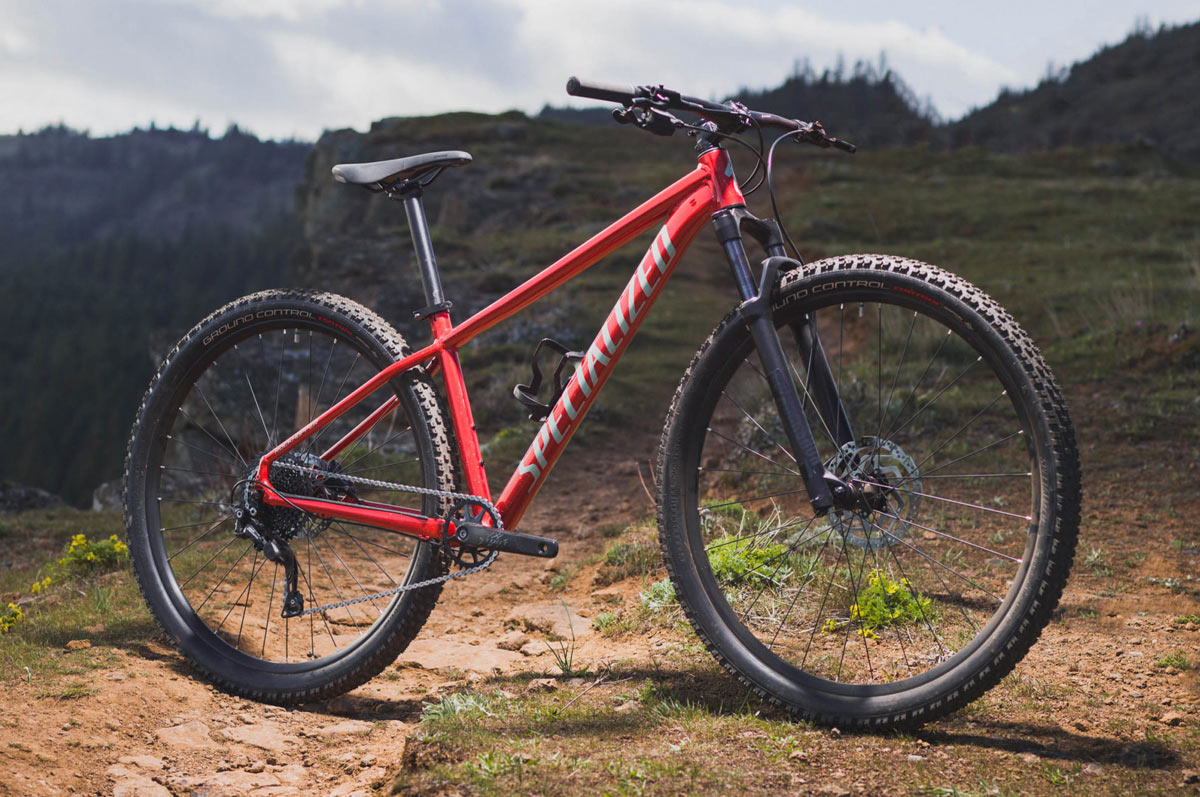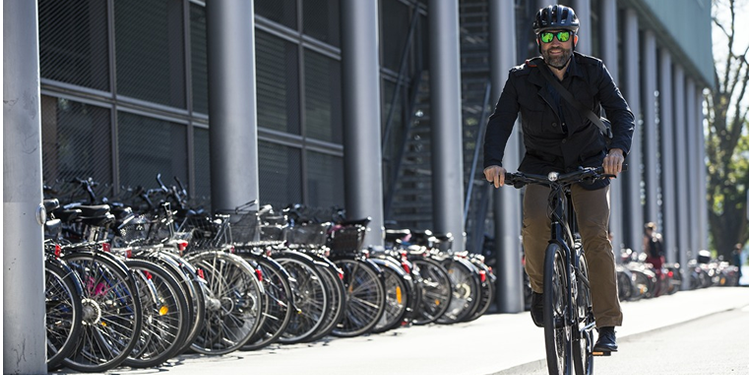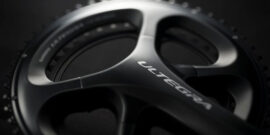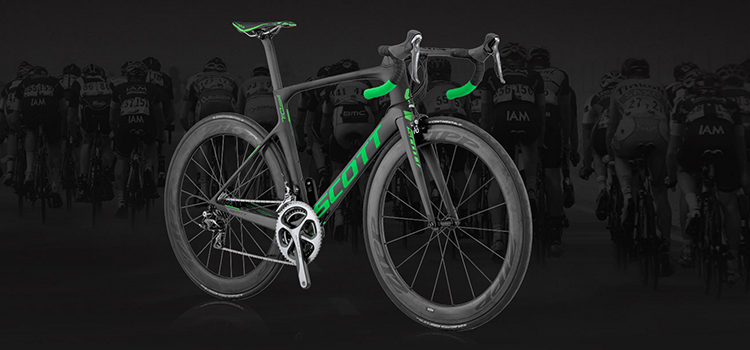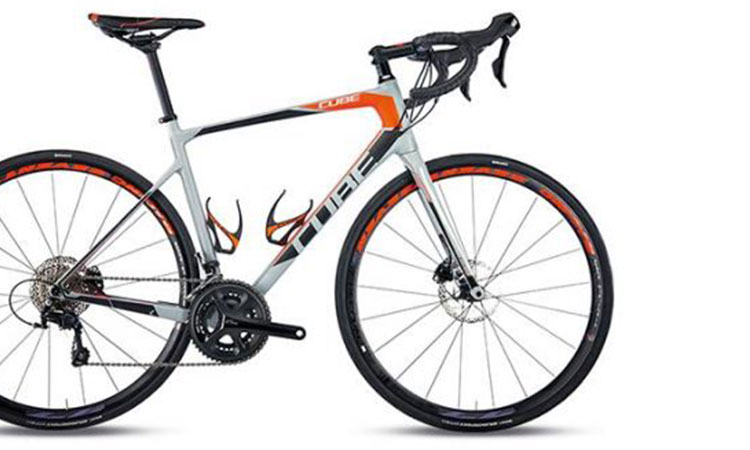With so many options, investing in your first mountain bike can be confusing. At 99 Bikes we’re confident we have the MTB for you – but how do you know which is right? In the simplest terms, the ‘right’ bike is the one that best matches your intended use. Crucially, it will also be the correct size for your body (see here for our sizing guide). Get these two things right and all the other details – suspension travel, geometry, wheel size and more – will flow from how and where you ride, and your budget. Here’s what to consider…
PRICE – HOW MUCH SHOULD I SPEND?
Mountain bikes suitable for light off-road use start at around £300, and are great for occasional adventures on loose but maintained surfaces such as towpaths and bridleways.
However, for more dedicated trail use and longer days in the hills, it’s best to look at ‘entry level’ machines with tougher, more specialist features. Hardtails (rigid at the rear, suspension fork) typically between £400 and £600, have aluminium frames with modern geometry and design, and naturally, the further up that price bracket you go, the higher specification their components. Check out the Specialized Pitch family, which includes Sport and women-specific options.
At the upper end you can expect hydraulic disc brakes (more powerful and reliable than cables, especially in the wet), air-sprung forks (lighter and easier to adjust than coil), and a superior spread of gears that can cope across a wide range of gradients, conditions and fitness levels.
At £1000 and over, steel and carbon hardtail frames appear, along with high-level componentry from big names such as Shimano, SRAM, Fox and RockShox. These are seriously capable bikes, with plenty of lightweight cross-country and harder-hitting trail options to choose from. Check out the Scott Scale 900 range for the kind of quality design and equipment to expect – it’s a great example of high quality hardtails, including aluminium, carbon and women’s-specific frames, and is representative of what we see across the whole Scott MTB family.
Entry-level full-suspension bikes start at around £1,400 and go to around £1,800 – you’ll see some in this guide. The extra cost of that rear shock means other components are necessarily lower-spec than an equivalent hardtail, but rear suspension is less about extra comfort and more about grip, stability and speed, both while climbing and descending. You can buy cheaper full-suss bikes, but weight and suspension control tend to create a significant compromise.
At £2,000 and above, expect quality air suspension with external adjustment, 10 or 11-speed drivetrains, accomplished hydraulic discs and frame geometry that’s well-tuned for your riding (long, slack and low for aggressive trails, taller, steeper and tighter for XC). Also look for valuable elements such as remote dropper posts and Tubeless Ready wheels/tyres. Bikes in this category tend to have frames that are well worth keeping, and adding upgraded components to as time goes by.
From £2,500 more carbon fibre framed MTBs are available, offering blends of stiffness, buzz-filtering compliance and low weight. From here to £3,500 you’ll find a host of light, strong, highly capable, up-to-the-minute full-suspension bikes covered in above-average componentry.
SUSPENSION – HOW MUCH DO I NEED?
If you’re riding a lot of towpaths, cyclepaths, bridleways, backroads and even gentle trail centres, you don’t need much suspension travel: think 100mm. These bikes sit at the cross-country (XC) end of the spectrum.
A hardtail is good for less aggressive riders, as simpler construction means it will be lighter and fitted with better parts than a full-suspension bike at the same price. Today’s 27.5in Plus wheel sizes are a big benefit, as their balloon-like 2.8-3in tyres add a lot of comfort and grip, without the extra weight and cost of rear suspension.
If you plan to attack the harder trail centre routes, head into the woods looking for trickier terrain, or hit the steepest, roughest stuff, you’ll appreciate some extra travel – and the longer frames that come with it. Longer frames with slacker head angles (67 degrees or less) are more forgiving and controllable on fast, slippery or rough descents, at the expense of some climbing agility. Look for ‘trail’ bikes with 120-140mm travel on a hardtail, or up to 150mm-160mm on full suspension.
Note these are only guides, not rules! You can only really get it wrong at the extremes. There’s no point pedalling around lots of extra weight if you never need the extra travel or frame strength, after all – and you certainly won’t enjoy a flighty, twitchy XC machine if it’s out of its depth on your favourite descents, no matter how easy it was to pedal up.
WHEEL SIZE – WHICH ONE IS RIGHT?
Bikes have generally settled into 27.5in (650b) for aggressive trail, and 29in for everything else. It’s down to simple physics: smaller wheels are inherently stiffer for a given weight, and change direction more snappily too. It’s also easier to fit smaller wheels into a long-travel bike without making it too long and tall.
While there’s a noticeable difference in feel between 27.5in and 29in, it’s another thing you can’t really get wrong. So long as the bike itself is as XC or trail-oriented as you, wheel size is personal preference. Aggressive 29ers are also emerging.
Whatever your ultimate decision, you’ll find your ideal bike somewhere in the huge range at Hargroves. So take a look now – and have fun!

